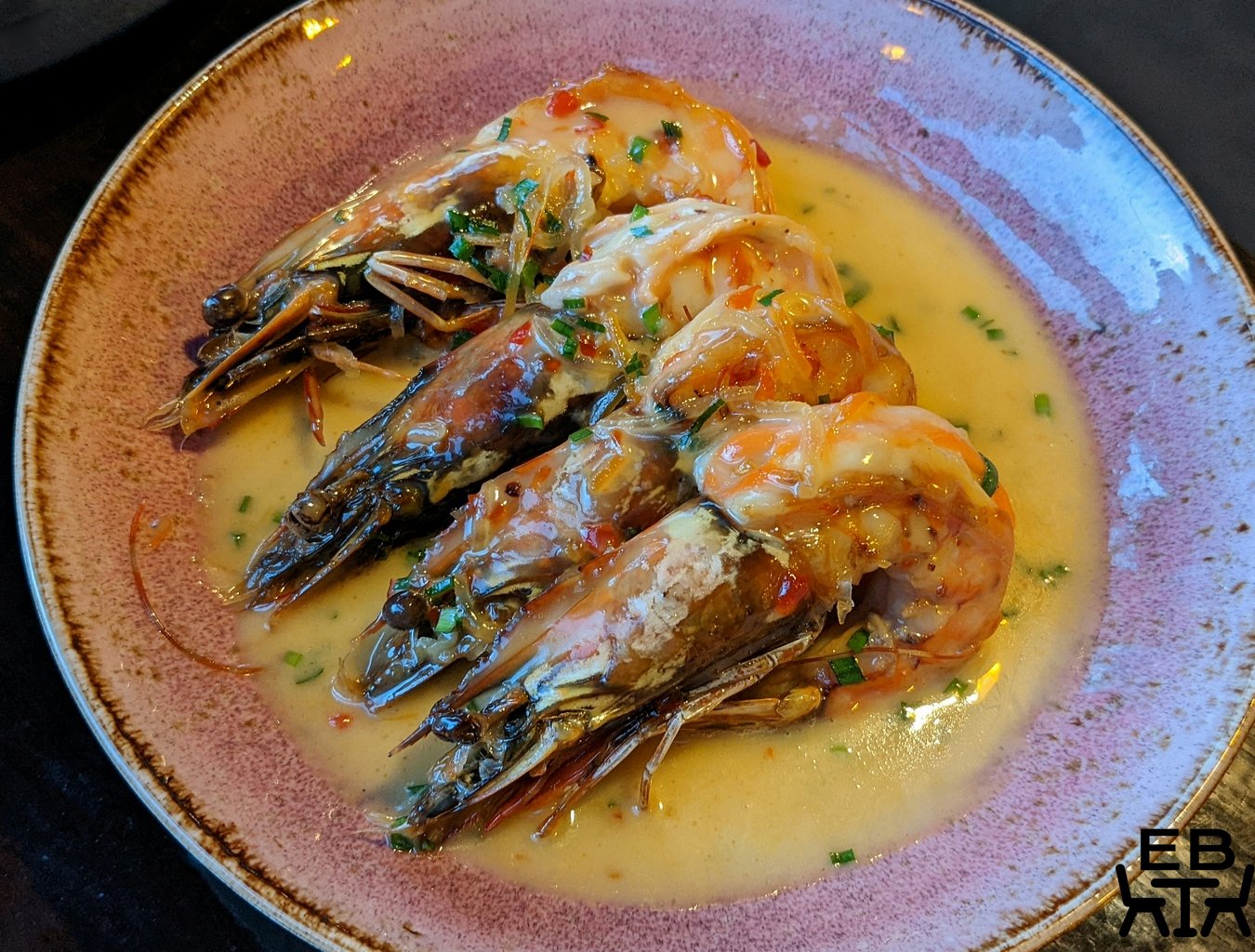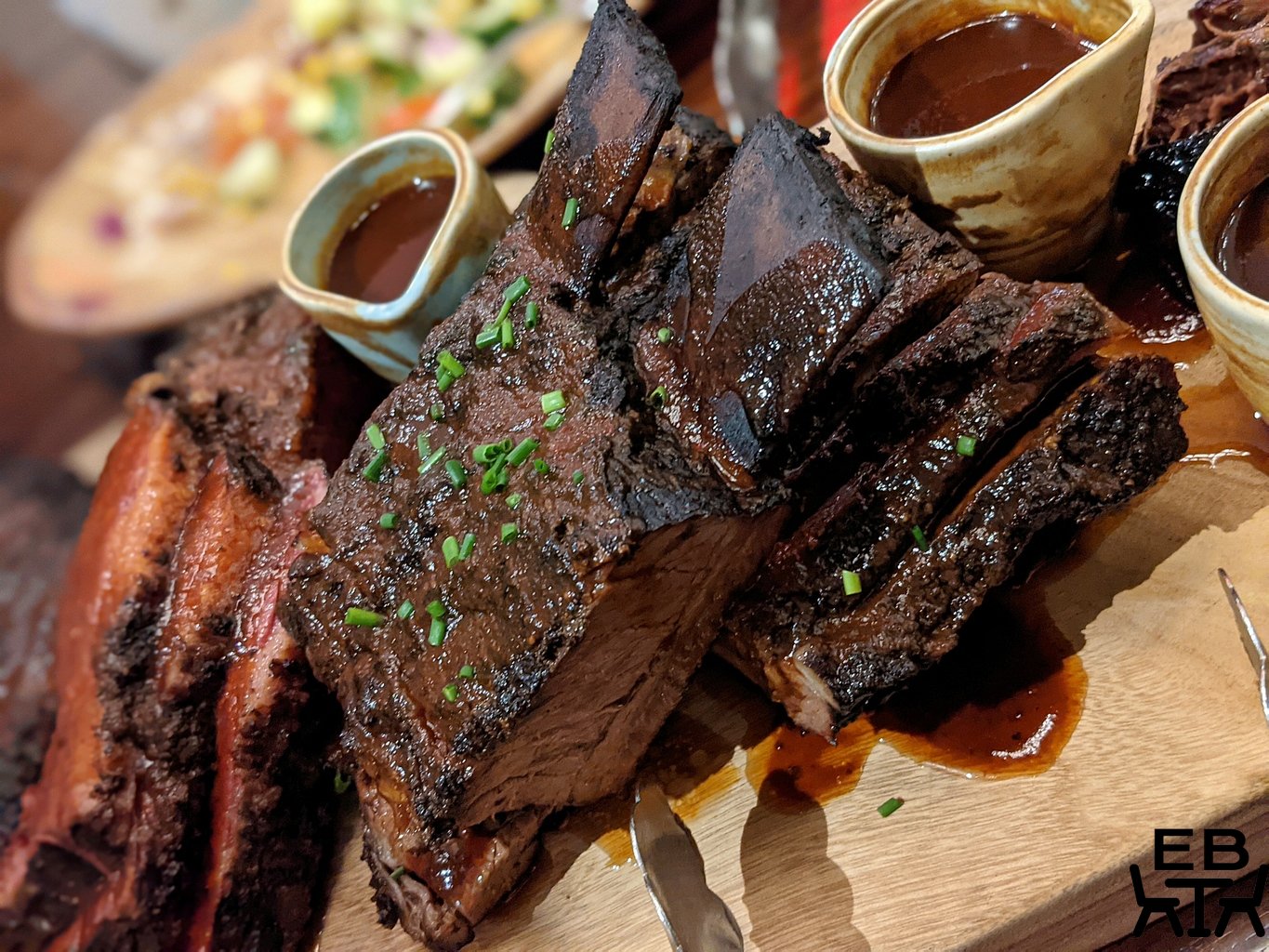Last updated on February 24, 2023
On our return visit to Japan, Le Sputnik was, of course, a necessary stop, given our amazing first experience, and that we had directed people there since then. We had booked ahead via their website, which has certainly become more user-friendly for non-Japanese readers since we were last there. We thought that that might be wise, as since our previous visit, Le Sputnik has earned a Michelin star. (We predicted that, as you can see from the writeup from our first visit.)
Finding the restaurant was much easier this time, as we knew which roads to walk down after getting off the subway at Roppongi. Once again, for those less sure, Google Maps is very useful. We found our way to the hidden door, a different door this time, with a slit of glass waitstaff can ostensibly look out of to see if patrons are there. The paint on the walls outside had a faintly cream hue instead of the crisp new white it once was, but it still looked clean.

Once through the door, we were greeted by the waitstaff in the ebullient way you would get when you crossed the threshold of an izakaya, but in English instead. Waitstaff checked our names, then showed us to the table that had been reserved, after taking our coats.
They had kept the same interior decor as before, with light coloured walls and walnut-hued tables and chairs with clean lines. It was classic but cosy, like the Hans Wegner round chairs that were stylish, but did not sacrifice comfort. Under the chairs were baskets for you to put your bags in, as is the Japanese way, so that it doesn’t have to be directly on the floor.
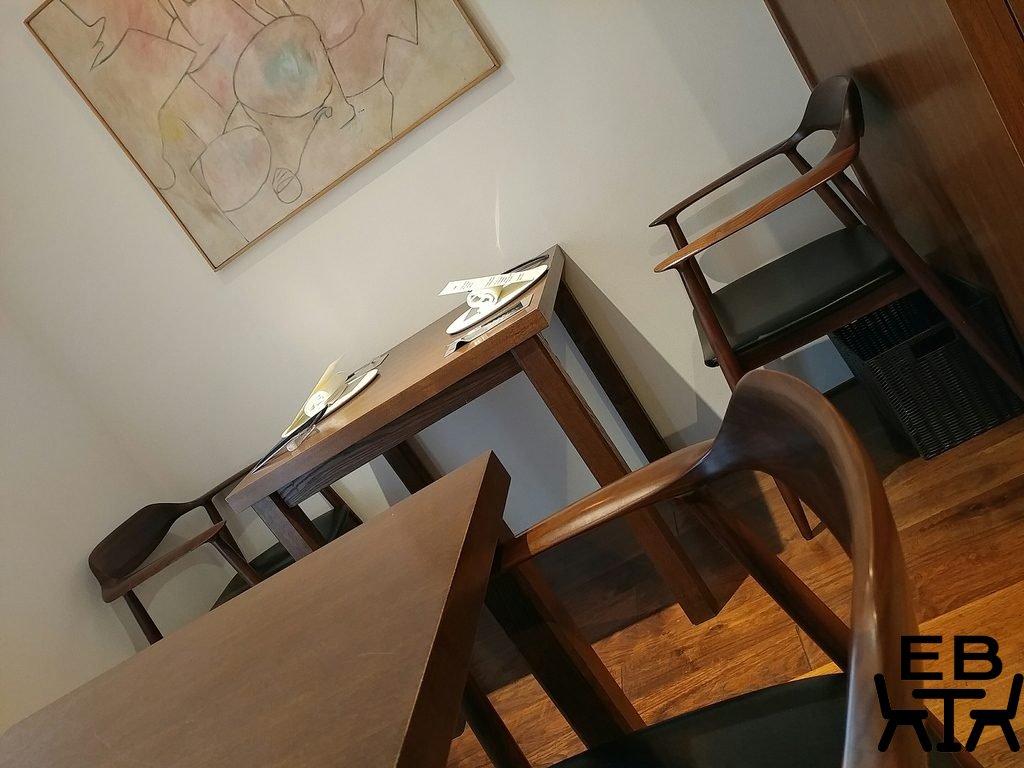
At each place at the table was the setting we recalled, with a pearly white textured charger plate sitting directly in front of each diner, and a rolled up napkin on it propping up an introductory card. This time, however, the sheet explaining the Le Sputnik concept was in English, so we didn’t need to use Google translate. In essence, “Le Sputnik” translates to “the travelling companion”, and they would like to take you on the creative journey through the courses as you dine with them. They say it better though.. Also at the table is an array of cutlery, laid out in preparation for the meal that is to come.
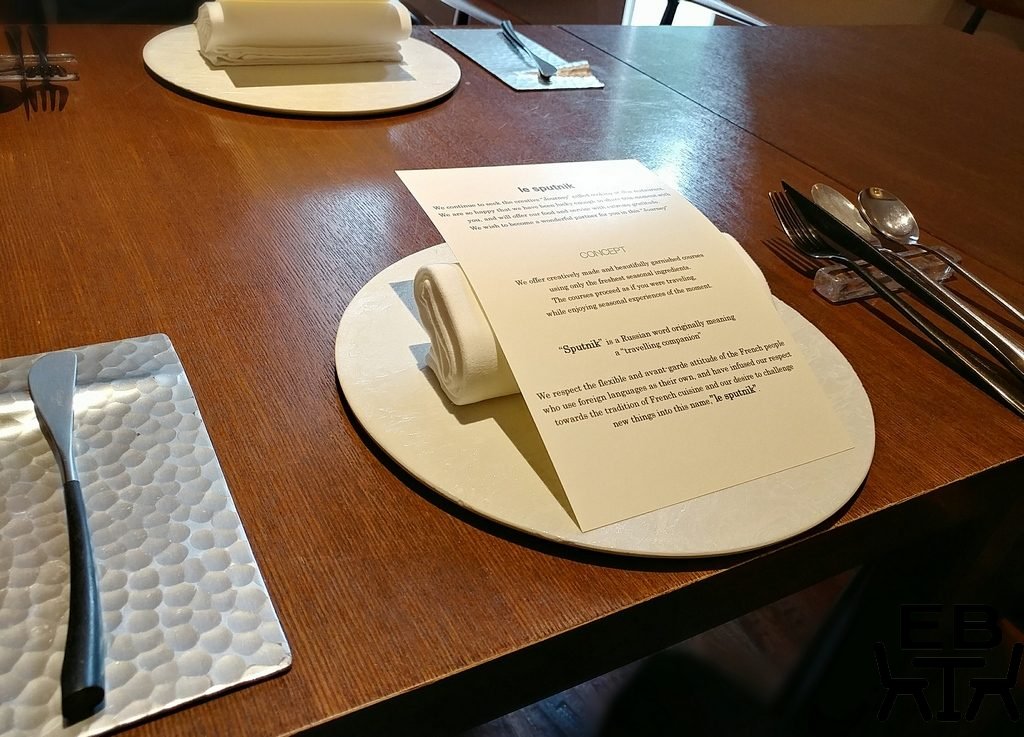

Hot towels were brought out, steaming hot and infused with mint essence. They were refreshing, and a way for patrons to clean their hands before tucking into food.

We were presented with drink menus, encased between wooden covers. We were pleased to find a couple of non-alcoholic options on the pages, and from that chose an elderflower soda and the iced oolong tea.
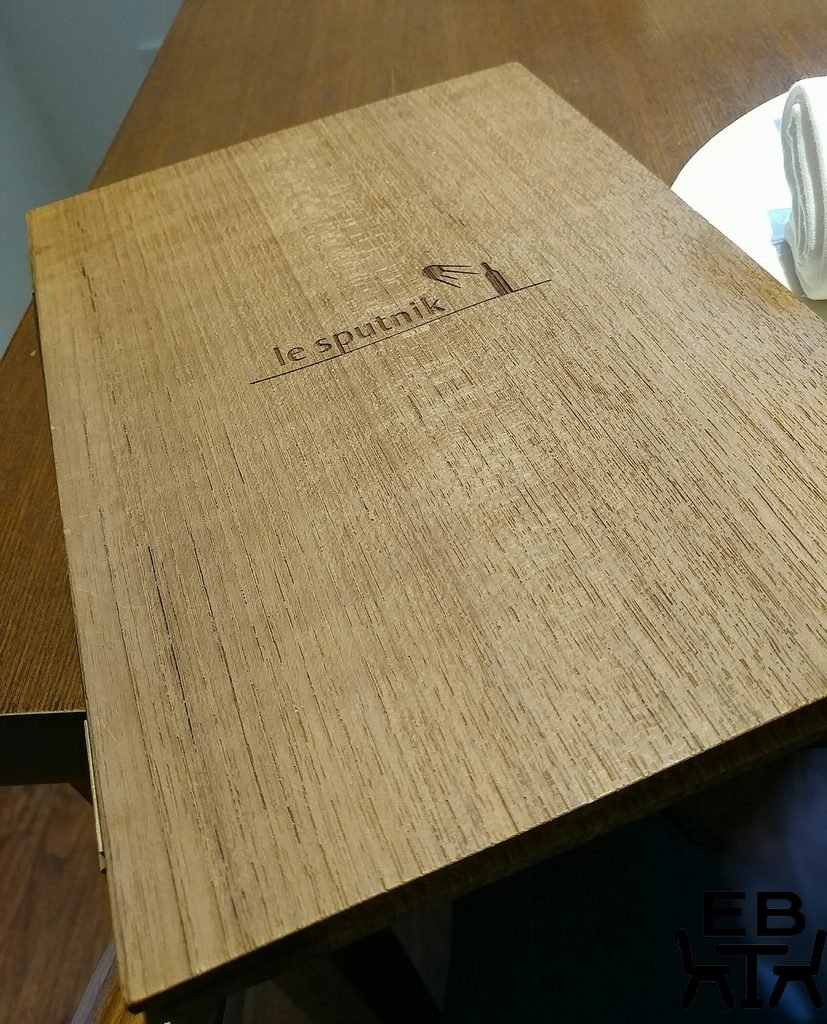
The drinks were brought out in eggshell-thin glasses, making them feel unusually delicate as they were lifted. The elderflower soda had good strength of flavour, and while people normally have oolong tea hot, having it cold seemed to bring out the woody notes.


There is no menu for the food, simply the chef’s omakase menus. When you make your reservation, among the questions they ask (besides about food allergies) is if you have been there before, and if so when, so that they can make sure that you get different dishes when you return, for a new experience. That was something we had only seen happen before at the very high end places on Chef’s Table, and certainly not something we had encountered in our dining experiences in Australia, and we thought it was a very considered touch.
The first thing brought out was a porous black rock, which was placed on the charger plate. Perched atop it was a pink roll, which we were told was tilefish with green apple. We were instructed to pick it up and eat it with our fingers. The hot towels to clean hands earlier were definitely a good idea. The tilefish was raw, sashimi-style, had been thinly sliced. The tender flesh was contrasted by the finely julienned green apple, which brought crunch and sweetness to each bite. The citrussy dressing drizzled over the tilefish gave it some additional freshness. It was a delicate start to the meal.



Bread and butter was brought to the table to accompany the meal. Each of us received a small baton of butter on a silver leaf-shaped dish, and a couple of generous slices of their still-warm freshly baked sourdough. The bread had a perfectly crunchy outside, and a soft, chewy inside with plenty of air pockets to keep it light.


The next dish was similar to one we had had previously, but different. It was explained as burdock root strips, and fish fried with five spice powder. It looked striking when placed on the table, the fish seeming to be weaving its way through the nest of burdock root strips, and with an expression on its face that said that it did not want to be eaten.. The flesh of the fish had been removed, and it was wrapped in more burdock root, then battered and fried. There was an accompanying burdock and balsamic vinegar dip. The fried fish pieces were a textural mix of soft flesh and crisp outside coating. They were nicely seasoned with the five spice, and the dip, rather than being acidic, added a little sweet fragrance. We had been told that the fish spine was edible, so, ignoring the Alien Predator-like face, we divided and ate it. It was like a fried bacon strip, but with a fishy note. We demolished the burdock root strip nest as well, and ate the crispy strips (though we couldn’t finish them all).

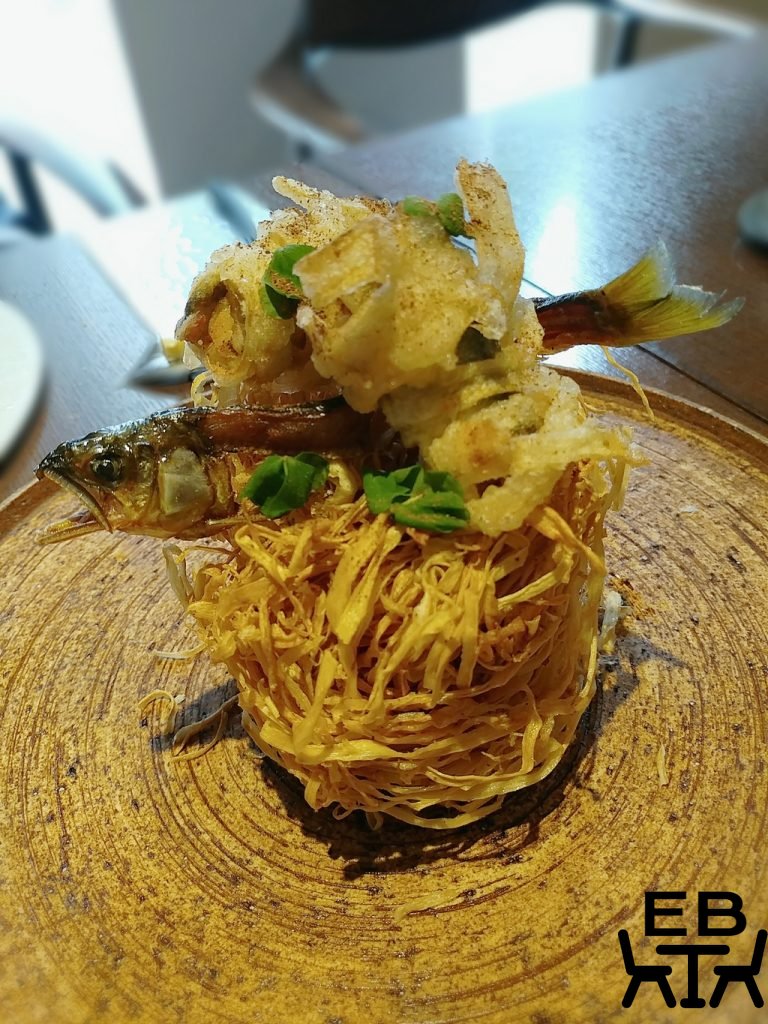


Next was a dish with a large circumference, and a relatively small well in the centre, clearly designed for visual impact. In the centre of this was what was described to us as sardines, potato, and fish bone stock. We were told that this dish was French in its origins, which was not surprising, given the head chef’s stints in Paris. The plating was detailed, each diamond-shaped fillet topped with two overlapping rings, one of celery, and one of onion. Sprigs of a flowering plant were placed on each piece of fish. It was quite the work of art. The inherent fishiness of the sardine was offset by the faint sweetness of the potato underneath it. The fish bone stock was rich, fragrant, and a good balance of sweet and savoury. Those tiny flowers on top of the fish pieces were not only decorative, we found that they delivered a burst of aniseed flavour when bitten into.
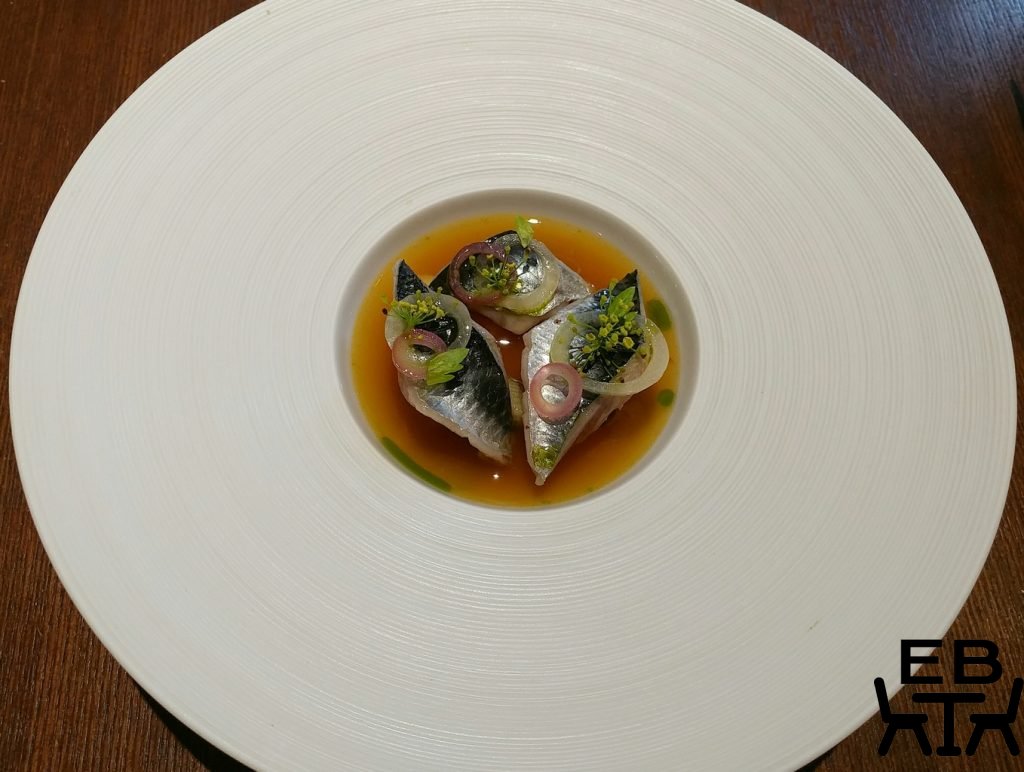
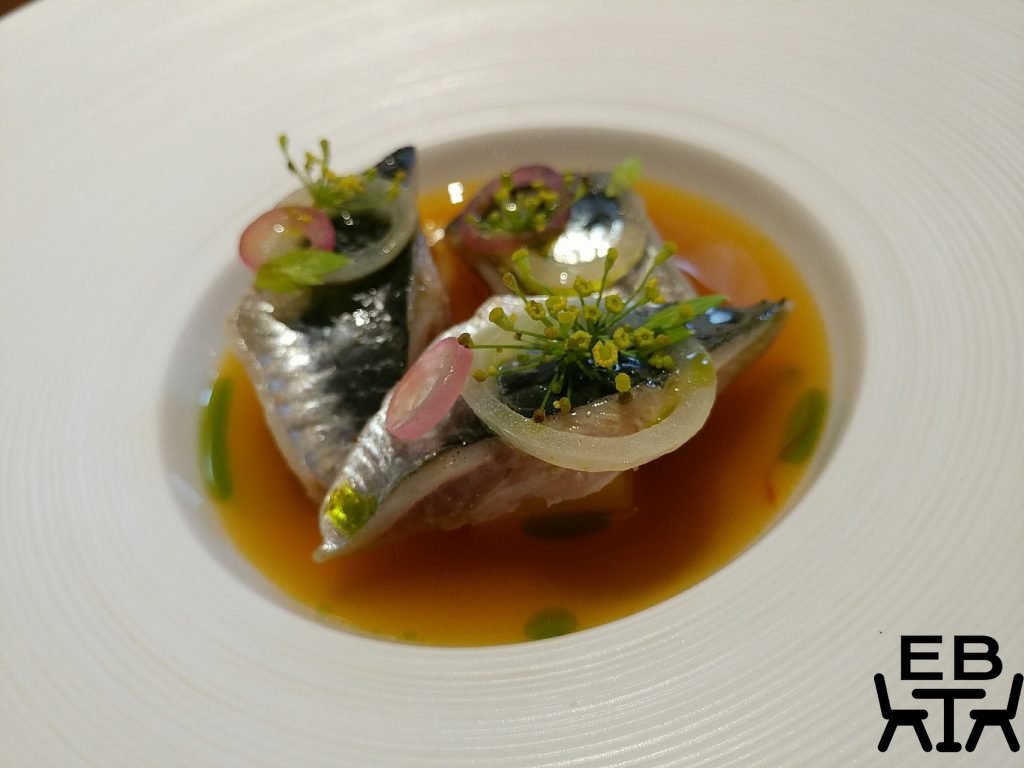

Following this was a dish that looked like a large marshmallow, topped with truffle shavings. Waitstaff described it to us as white french truffle, mushroom powder, meringue, egg yolk with bacon pieces around it, and mushroom toast as the base. There was certainly truffe aroma from it as it was set down on the table. The white meringue puffed away to nothing once in the mouth. It was like eating air, and it was hard to believe that it had enough substance to hold anything up. Once we struck the middle, the runny egg yolk escaped, pouring out like molten gold. While the paper-thin slices of truffle gave the dish their distinctive aroma, they didn’t in themselves impart much flavour. The mushroom powder it was dusted with did, however, bringing earthy umami, without actually being salty. At the base of the dish, along with the very thin slice of toast, was a mushroom sauce. It had a lovely flavour, like concentrated mushroom, peppery and salty. All together, it was a like an ultra modern breakfast dish.







For the next course, we each received different dishes.
One of us received what looked like a rose on a silvery, square plate, with sweeping lines emanating from the rose to the corners of the plate. It was explained that it was made of beetroot and foie gras, and that only six were made for each lunchtime service. It was an amazing construction, each petal of the rose made of a paper-thin shaving of beetroot, actually translucent when you held it up. It seemed a pity to demolish it, but we told ourselves that it was made to be eaten. Each petal had a crisp shatter when you bit into it. At the base of the rose was a piece of foie gras, draped with a beetroot gel sheet. Eaten together, it had a sweet, almost banana-like flavour. There were crushed peppercorns in one corner of the plate, and waitstaff told us to try adding a little of it. It did change the flavour tones, making them more savoury.




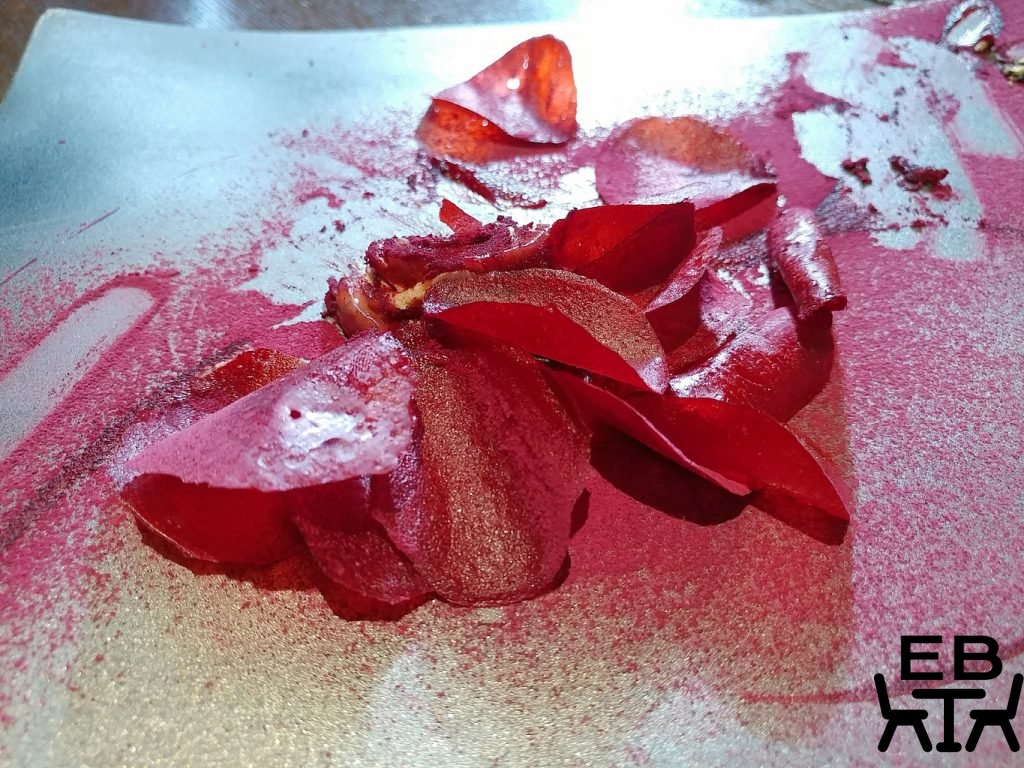
The other dish was more reserved in presentation, a brown, shiny mass on a silvery grey plate. We knew, of course, that there would be more to it, and waitstaff told us that it was composed of an espresso jelly sheet, gingerbread powder, red sorrel, orange compote, and foie gras. The espresso jelly sheet was thin and silky, and had coffee notes, without bitterness. The orange compote was citrussy, but not sour. Eaten together, it had nutty, meaty flavours, tempered by natural sweetness from caramelised meat juices. Even though the central ingredient was the same, they brought out very different aspects of it in each dish. This had more roasted, umami, robust flavours, but both were delicious in their own ways.



For the next course, our dishes converged again. We were told it was the fish of the day, which was snapper, accompanied by squid and cabbage. The sauce accompanying it was poured tableside. It made a striking black pool, and we were informed that it was fish bone broth with olive. The sauce was sweet, slightly tart, and almost tomatoey. The snapper was perfectly cooked, almost translucent at the edges. The fish flesh was tender, while the skin had been fried until crunchy, and itself had a toasty flavour. The slivers of squid with it were also nicely cooked, and not chewy at all.

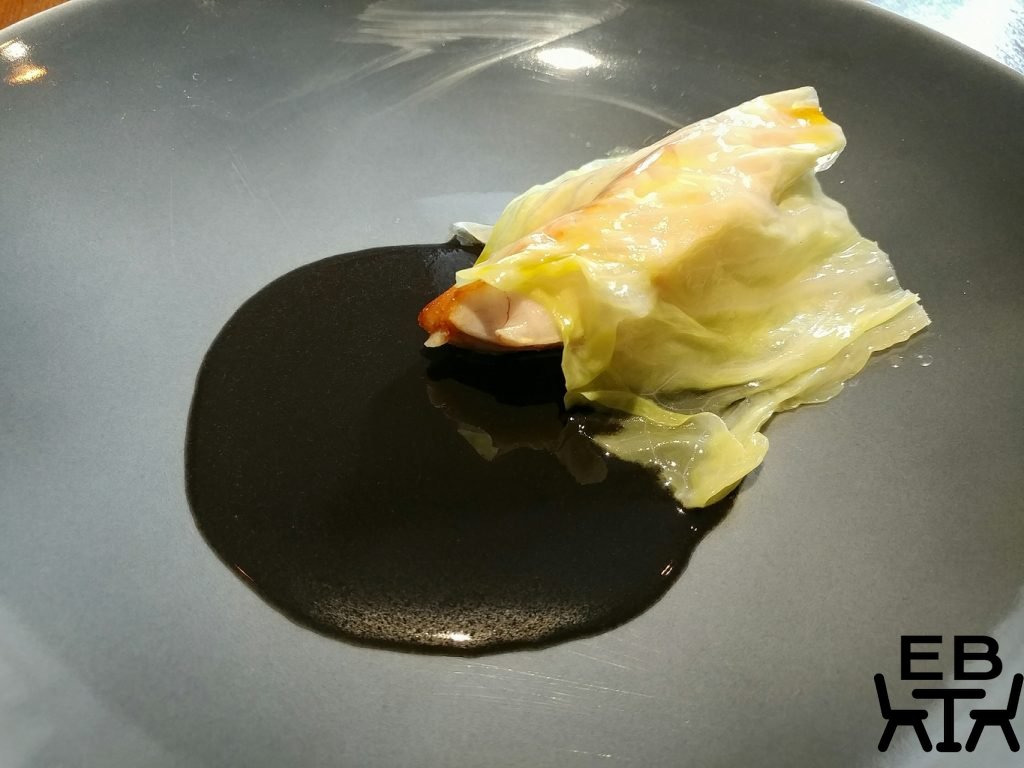

The next dish brought looked like modern art on the plate. On a round silver disc were zigzags of a thick black sauce, a cut of meat, and an assortment of elements scattered around it. It was described as Hokkaido venison, red wine jus, pumpkin, chanterelle mushrooms, seedless grapes, juniper berry dust, and branches from a 37 year old rosemary tree. Aromas of charcoal barbeque wafted up as the dishes were set down. The venison was tender, and had been sprinkled with salt flakes, which gave an extra kick. The meat had the taste of being kissed by the fire, mildly smoky, but not overpoweringly so. The other elements on the platter provided an assortment of different flavours that interplayed with the flavours of the meat to different effects. The red wine jus had balsamic, fruity hints. The pumpkin, in both its wedge and pureed forms, was naturally sweet. The chanterelles had been braised in a savoury stock, and were tender and moreish. The juniper berry dust delivered a peppery heat. The seedless grapes had a complex, concentrated sweetness. While the rosemary branch was not for the eating, it added a grounding point to the meal, a brief period of time within a much longer span. This was certainly nothing like your standard meat dish.

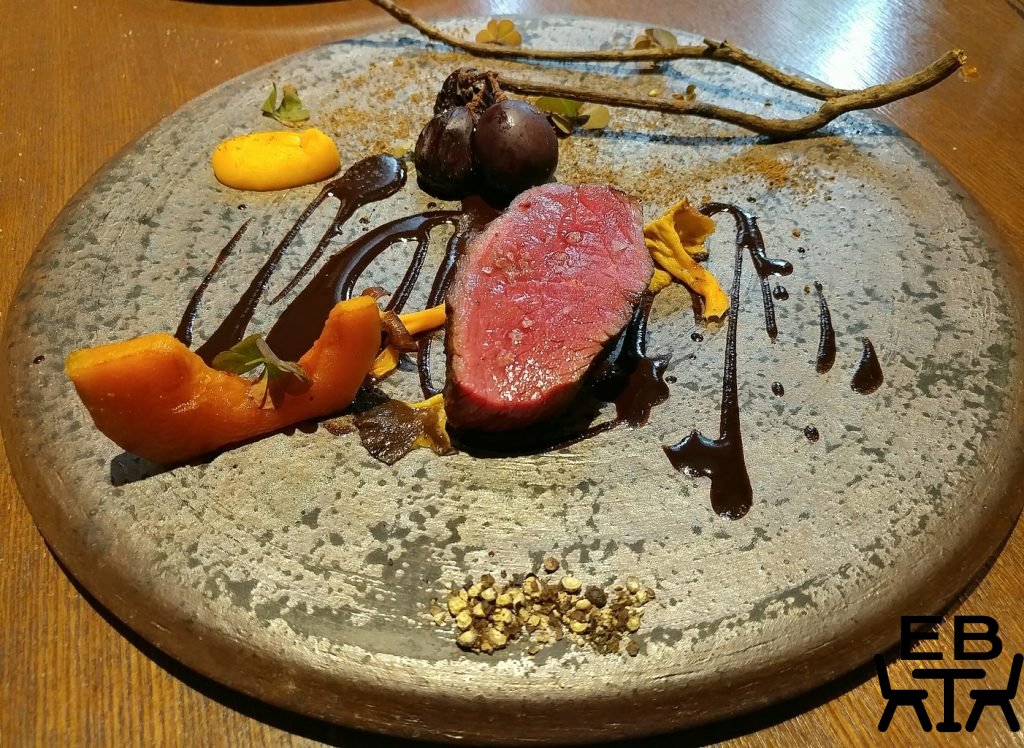



We watched the arrival of the dessert dish with some sadness, as it heralded the conclusion of the meal. It was an elaborate little tower, described to us as tuile discs, caramel milk mousse, pear, and vanilla. It had the appearance of a cubist interpretation of a pear, discs interspersed with the mousse in graduated sizes forming the conical top. The tuile discs were wafer-thin and perfectly crisp, and, as we discovered, in alternating flavours of chocolate and caramel. The caramel mousse was light, and not too sweet. Slightly poached pear formed the base, and it had a layer of bruleed sugar on the outside, forming a crisp bittersweet shell. In the centre of the pear base hid caramel ice cream. This had small, crunchy caramel bits through it. Surrounding the base of the stack was a pear puree, smooth and lightly vanilla scented. Each element of this dessert was perfectly done, and despite its saccharine-sounding components, it was not too sweet.




Coffee and tea followed.

For a parting petit fours, a board was brought out, with two glass petridishes, and two choux pastries. They were introduced as cream puff choux with matcha powder, and hojicha pudding with olive oil. The choux had light, slightly savoury pastry, and a sweet, smooth, caramelly custard in the inside. They had a faint matcha flavour from the powder they were dusted with. The hojicha pudding was a smooth, light custard, with good, strong hojicha flavour. There were also flakes of French rock salt on one side of the dish, to have with the pudding. The olive oil and salt were an unusual combination of flavours to have with the hojicha.. The pudding itself simply melted away in the mouth, as if one were eating water.



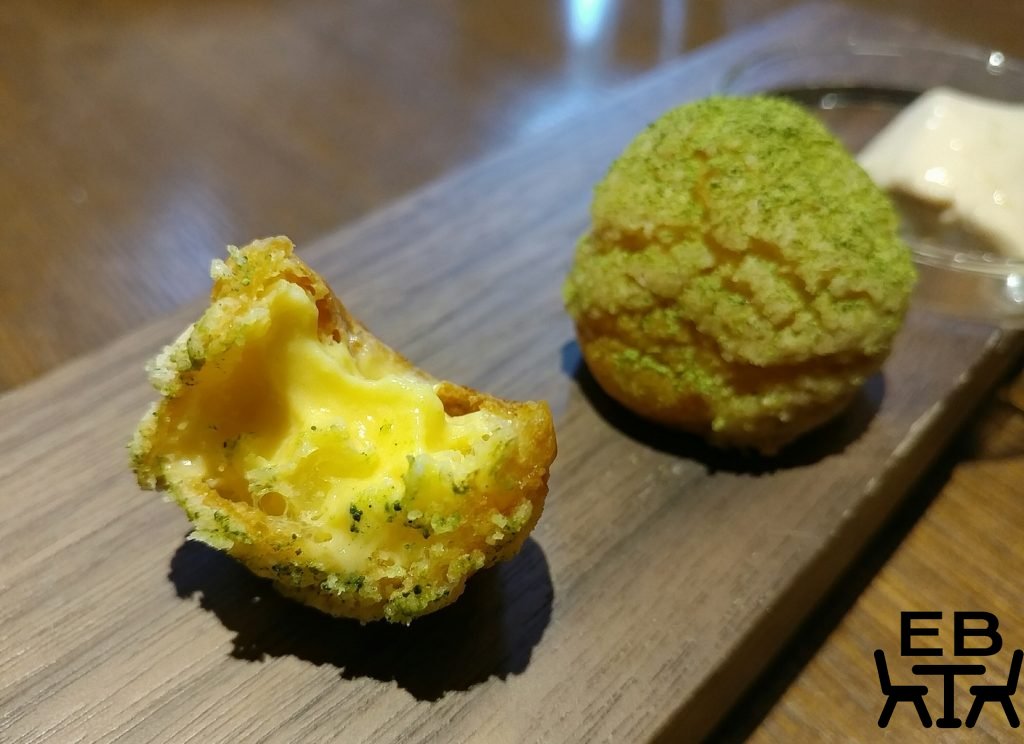
As with our previous visit, waitstaff were attentive and polite. They were warm and friendly, rather than stuffy and formal. At the end of our visit, one of the waitstaff and the head chef himself came out to see us off. This time, we did get a photo..which won’t be put up here to preserve our anonymity.

On the whole, this visit to Le Sputnik had less of the element of surprise compared to our first visit, likely because we were anticipating culinary magic. The dishes were technically very well executed though, and, if anything, were more complex than those from our previous visit. They were deft, skilled creations that involved extraordinarily detailed work. Their Michelin star is certainly well-deserved, and this is still absolutely a dining destination we would recommend to those visiting Tokyo.
Scores:
Food: 4/4
Setting: 1.5/2
Service: 2/2
Total: 7.5/8
Price point: Lunch omakase ¥6500 (so about $80 AUD). Dinner ¥12000 to ¥18000 depending on whether you get 8 or 10 courses.
Value: Lunch is an absolute bargain.
Details:
Address: 7 Chome-9-9 Roppongi, Minato, Tokyo 106-0032, Japan
Phone: +81 3 6434 7080
Website: Le Sputnik





